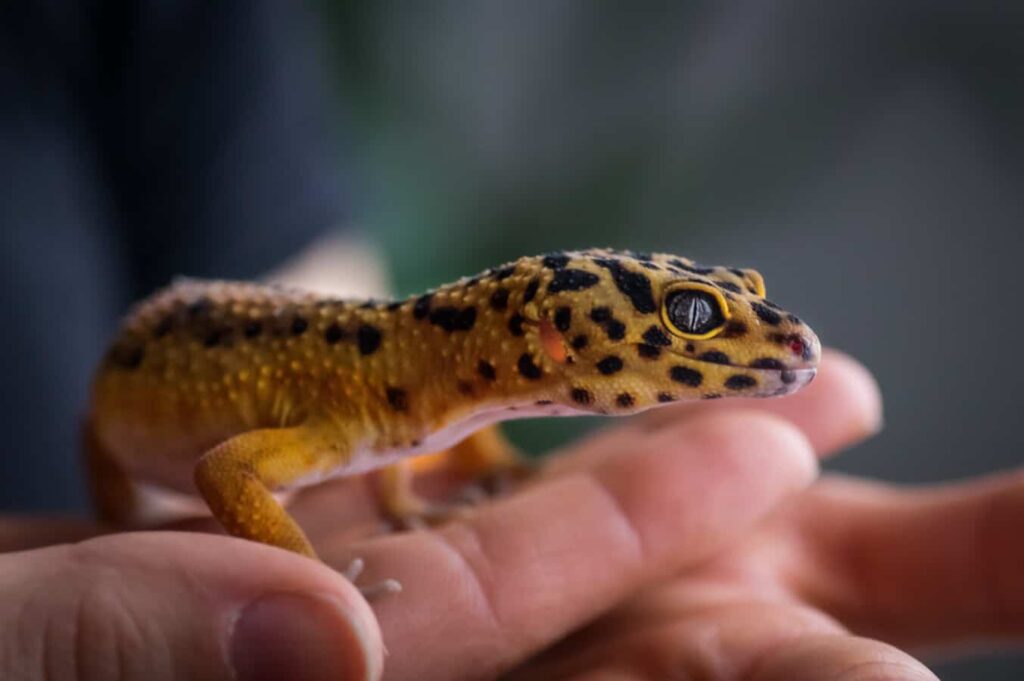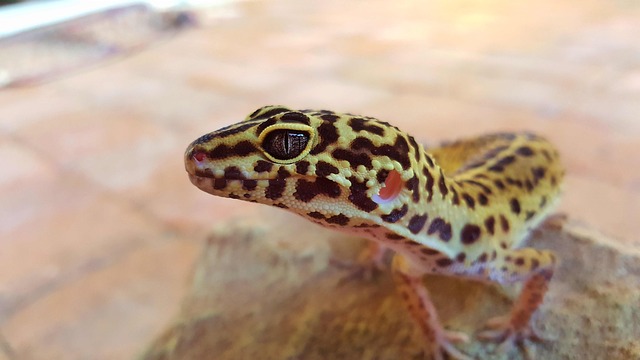If you are an animal lover and have leopard geckos, then the chances are that you may want to introduce new individuals to the mix.
Moreover, a lot of people decide that going down the breeding route is a good idea. That said, there is the concern over whether juvenile leopard geckos will be safe when kept in a tank with adults so getting the right setup is crucial from the getgo.
Leopard geckos are not fussy eaters and it is not uncommon for them to attack one of their own. If they can fit something in their mouth then they will have a good go at eating it. Until the babies are three months old, it is best to house them in their own enclosure to avoid injury from being attacked.
Looking after baby leopard geckos is a big responsibility. But that doesn’t mean that it is difficult. As long as they have the correct living environment, you will find that a baby leopard gecko is pretty easy to care for.
What’s more, they make excellent starter pets.
Can I Put A Baby Leopard Gecko In With An Adult?
Whether you have purchased a new baby leopard gecko after owing an adult and falling in love with these adorable creatures or your male and female have successfully bred, it is vital that you ensure they have somewhere safe to live.
Even if the baby belongs to one of your adult females, there is a risk that she will try to eat it if given half a chance.
In the wild, the female would lay her eggs and be on her merry way, leaving the babies to fend for themselves. If they are in captivity, this is no different which is why breeders will remove eggs once they have been laid and protect them using an incubator.
For these reasons, it is essential that you put your baby or babies into a separate tank until they are old and large enough to cohabit with other adults.
How Many Baby Leopard Geckos Can I Keep In One Tank?
If you have a batch of baby leopard geckos, the good news is that you may be able to keep several of them together. As a general rule, you should keep no more than four infants in any 10-gallon tank.
Of course, if you have a larger tank, you can add more babies. That said, the more room they have the better so do keep this in mind.
As they start to get a little bigger, the baby leopard geckos will require more space and so once they hit the age of around 3-4 months, and are considered juveniles, you will need to lessen the number per 10 gallons to three.

Within the next couple of months, your leopard geckos will begin to come towards sexual maturity. While this typically happens at around the age of ten months, young leopard geckos coming up to six months may experience hormonal surges.
As a result of this, males may begin to fight. This is less common in younger animals, but it is certainly not unheard of and should be monitored.
By the age of six months, you should only be keeping two leopard geckos in any 10-gallon tank. They will require more space for move around and will also want room to hide without being on top on one another.
Keeping Adults Together
After the first year of their lives, your leopard geckos will no longer be considered babies. At this stage, it is possible for them to live together but you must be mindful of who you pair with who.
As we mentioned earlier, males are likely to fight and this can cause serious problems.
Moreover, your leopard geckos stand the chance of becoming injured and for this reason, two males should never live alone together.
As adults, it is acceptable to keep two leopard geckos in a 10-gallon tank. But some owners prefer to up this to a 20-gallon tank and keep a trio.
In this case, you should always make sure that you have one male for every two females. If any of the animals show signs of aggression or stress then you should take immediate action and rehouse the geckos.
Handling Baby Leopard Geckos
Baby leopard geckos can become very stressed if they are handled too much during the first few weeks of their lives. Much like living in a cage with adults, incorrect handling could lead to an injury.
For this reason, it is better to wait for around two weeks after bringing your baby home before you begin handling it.
Not only will this allow your gecko the chance to get used to its new home but it will also allow it to get used to you. When you begin handling your pet, it is important not to swoop in and grab it right away; this will only cause it stress and will immediately ruin any chance of the gecko trusting you.
Instead, you should start by placing your hand into the enclosure and letting your gecko come to you. Once he starts getting used to you, you can take things to the next step.
Gradually, your baby leopard gecko will come to trust you and you will be able to handle him freely.
It is also important to point out that you should not start handling a baby leopard gecko until it is eating properly.
Conclusion
In the wild, adult female leopard geckos will lay their eggs and quickly abandon them. In addition to this, adult leopard geckos will make an attempt at eating anything they can get their jaws around and this also means that they might attack or try to eat babies and those that are smaller than them.
If you have recently adopted a baby leopard gecko, you should avoid placing it in an enclosure with a fully grown adult.
However, it is possible to put babies and juveniles in the same tank provided that they have a good amount of space.
Moreover, you must make sure that two males are never kept in the same enclosure after or just before they reach sexual maturity as they may become territorial and fight.
- Are Slow Worms Harmful to Dogs? Everything You Need to Know
- Can Chickens Eat Slow Worms? Everything You Need to Know
- Can a Slow Worm Survive Being Cut in Half? The Truth About Slow Worm Regeneration
- Are Slow Worms Edible? A Clear Answer to Your Question
- Are Slow Worms Beneficial for Compost?





